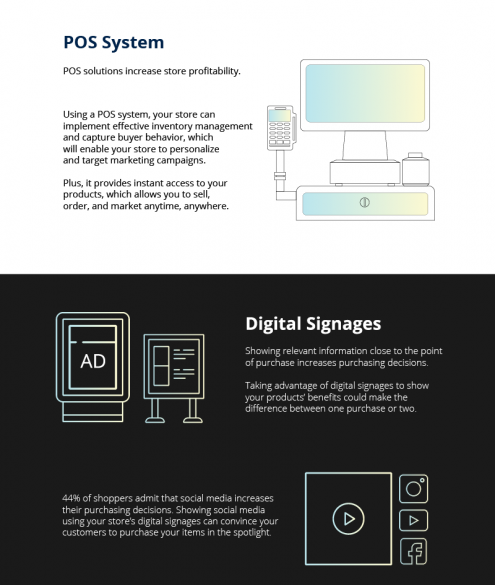The retail industry is continuously changing, and it is more complicated than ever. The retail landscape expanded during the rise of the marketing era, allowing the creation of different retail stores, such as discount stores, specialty stores, off-price stores, and e-commerce stores. Meanwhile, the progression of technology has seen online commerce’s scope expand beyond retail.
Although many shoppers, especially the younger ones, prefer to shop online, some still prefer in-store shopping as there are experiences that online shopping cannot provide, such as unique, interactive environments. Hence, to engage more customers in retail stores, businesses must leverage technology and transform the commerce experience into a more integrated part of their consumers’ lifestyle.
Many retail stores, mainly supermarkets, use automatic cash registers or self-checkout systems to create a seamless and personalized customer journey. Meanwhile, several others use POS solutions to implement effective inventory management. POS systems can capture buyer behavior, which will help a store personalize its marketing campaigns.
Moreover, other digital pieces of equipment can essentially attract and encourage customers to make a purchase. Switching to a more electronic shelf labeling system improves the shopping experience of customers. These electronic shelf labels (ESL) do not only display a product’s price, but it can also show more information, such as nutritional facts, size, and price per weight. Additionally, ESLs also allows retailers to interact with their customers across all channels through displaying stock levels, the online price of their competition, and reviews of products.
Using electronic price tags for both the in-store and warehouse shelf labels reduces the operational cost of retailers. With digital price tags, businesses can save on labor and material costs when changing tag information. ESLs allow staff to make a change from the POS to update the labels on the shelves within minutes.
Consequently, digital signage is another economic tool that effectively attracts customers, increases in-store traffic, boosts sales, and promotes in-store events. Digital displays can also raise brand awareness and deliver the store’s message to its customers effectively through an impactful animation or video story.
Other electronic displays used by retailers have touchscreen features, opening more opportunities to engage and sell products to consumers as it offers customers a chance to learn more about the product lines through detailed information display or product demos.
Besides digitizing equipment used inside the retail store, businesses must consider installing several security cameras within the store’s vicinity to ensure customers’ and staff’s safety. They should also provide their customers with material handling equipment, such as shopping carts and baskets, to let customers carry as many items as they need, making their shopping experience more convenient and comfortable.
Here is an infographic from SoluM, which lists five essential pieces of equipment that retail stores must have to make customers’ in-store shopping experience more convenient and interactive.

